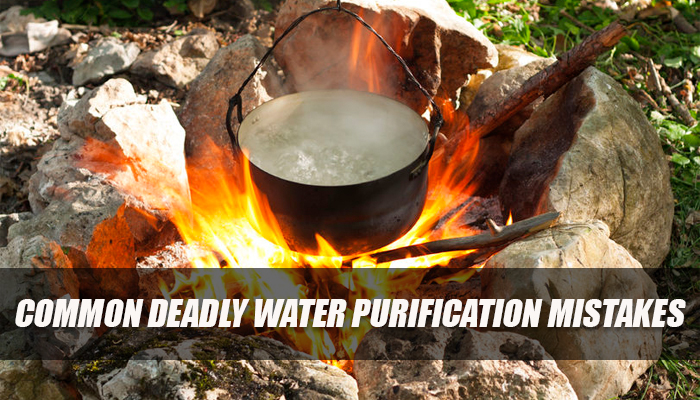
Filtration is important and sometimes is overlooked or abandoned completely because the water source looks clear, so this can be a serious mistake. Filtration is an important step in the purification process.
Micro waterborne cysts cannot be easily seen by the naked eye, and these cysts can harbor bacteria. Cysts can be best described as hard-shelled seedpods that can protect bacteria from destruction even when the water is boiled or chemically treated. The bacterium is protected until the cysts enter the stomach where digestive acids easily dissolve the shell releasing possibly harmful bacteria into the body.
There are various ways of filtering water and some methods are obviously more effective than others are, but any filtration is better than no filtering at all. Coffee filters, cheesecloth, cotton balls stuffed in a funnel neck, clean cotton cloth, sand, gravel, grasses, charcoal and clean soil can be used as filtering mediums.
The ideal method is when more than one filtering medium is used in layers. The mediums should be layered from coarse to fine so the bigger debris is filtered out first while the finer medium captures the micro-particles at the bottom of the filtering device just before dripping into a clean container.
If filtering is out of the question, you can let the debris settle and then slowly pour off the water leaving the debris at the bottom into a clean container for chemical purification or into a container for boiling.
Another mistake that is made is dipping a canteen into contaminated water and then chemically treating the water inside without ensuring the drink line (threads) and the cap are sanitized.
The ideal method is to collect water in one container then filter properly into a clean container prior to chemical treatment. If this is not possible, then treat the water using purification tablets or drops or by using household bleach. Once the chemical is in the water and you have shaken the canteen well open the cap and tip the canteen up to flush the threads and cap with the treated water. Then wait the prescribed time, which is usually 30 minutes. In some cases, certain tablets will require a longer wait period, so read the instructions that came with the purification tablets.
Below is the recommended amount of bleach for various volumes of water. The chart is courtesy of (The Clorox Company, 2017).

If the water you want to treat is cloudy even after filtration or you simply cannot filter it, then add twice the amount of bleach recommended above (The Clorox Company, 2017).
Bacteria and parasites can be destroyed at 145° F if the temperature is maintained for at least an hour. However, at 212° F bacteria is destroyed after one minute of rapid boiling.
One mistake that some make is assuming that by boiling water they will destroy or remove chemical toxins, poisons, and petroleum products from the water. This is not the case, so if your water source has an oil slick on top leave it alone.
If you use commercial grade activated charcoal as a filtering medium, you can remove certain pesticides, herbicides, heavy metals and some petroleum products from the water, but this is not foolproof, so if you do suspect contaminates of this type it is best to leave the water alone.
Another mistake some make is assuming that boiling longer kills more bacteria. You do have to boil longer depending on your elevation, but unless you are on top of Mount Everest boiling longer than three minutes is just wasting water volume, because you can boil your water pot dry if you are not careful. If your water source is limited, you simply cannot let your water boil away.
As atmospheric pressure decreases, water boils at lower temperatures. At sea level, for example, water boils at 212 °F. For every 500-feet increase in elevation, the boiling point of water is lowered by just under 1 °F.
At 7,500 feet, for example, water boils at about 198 °F. Because water boils at a lower temperature at higher elevations, it must boil longer to achieve the same results as boiling at 212° F. Up to 10 minutes at the highest elevation, but three minutes is adequate in most cases.